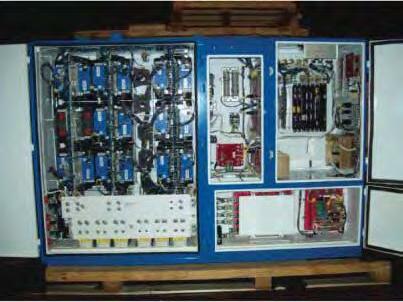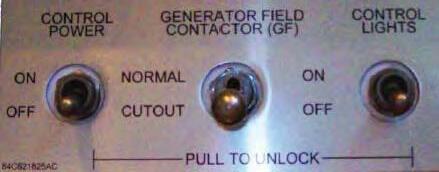
1 minute read
Removal and installation of anti-sway bar
1 2
3 4

87872

FIGURE 00-7. MAIN CONTROL CABINET 1.Control Power Switch 2.Generator Field Contactor (GF) Switch 3.Capacitor Charge Light 1 (CCL1) 4.Capacitor Charge Light 2 (CCL2)
To maintain the performance of the machine over a long period, and to prevent failures or other troubles before they occur, correct “operation“, “maintenance and inspection“, “troubleshooting“, and “repairs” must be carried out. This section deals particularly with correct repair procedures for mechatronics and is aimed at improving the quality of repairs. For this purpose, it provides information on handling electrical equipment and handling hydraulic equipment (particularly gear oil and hydraulic oil).
Points to remember when handling electrical equipment 1. Handling wiring harnesses and connectors
Wiring harnesses consist of wiring connecting one component to another component, connectors used for connecting and disconnecting one wire from another wire, and protectors or tubes used for protecting the wiring. Compared with other electrical components fitted in boxes or cases, wiring harnesses are more likely to be affected by the direct effects of rain, water, heat, or vibration. Furthermore, during inspection and repair operations, they are frequently removed and installed again, so they are likely to suffer deformation or damage. For this reason, it is necessary to be extremely careful when handling wiring harnesses.
2. Main failures occurring in wiring harness
•Defective contact of connectors (defective contact between male and female)
Problems with defective contact are likely to occur because the male connector is not properly inserted into the female connector, or because one or both of the connectors is deformed or the position is not correctly aligned, or because there is corrosion or oxidization of the contact surfaces.
The corroded or oxidized contact surfaces may become shiny again (and contact may become normal) by connecting and disconnecting the connector about 10 times.
•Defective crimping or soldering of connectors
The pins of the male and female connectors are in contact at the crimped terminal or soldered portion, but if there is excessive force brought to bear on the wiring, the plating at the joint will peel and cause improper connection or breakage.




